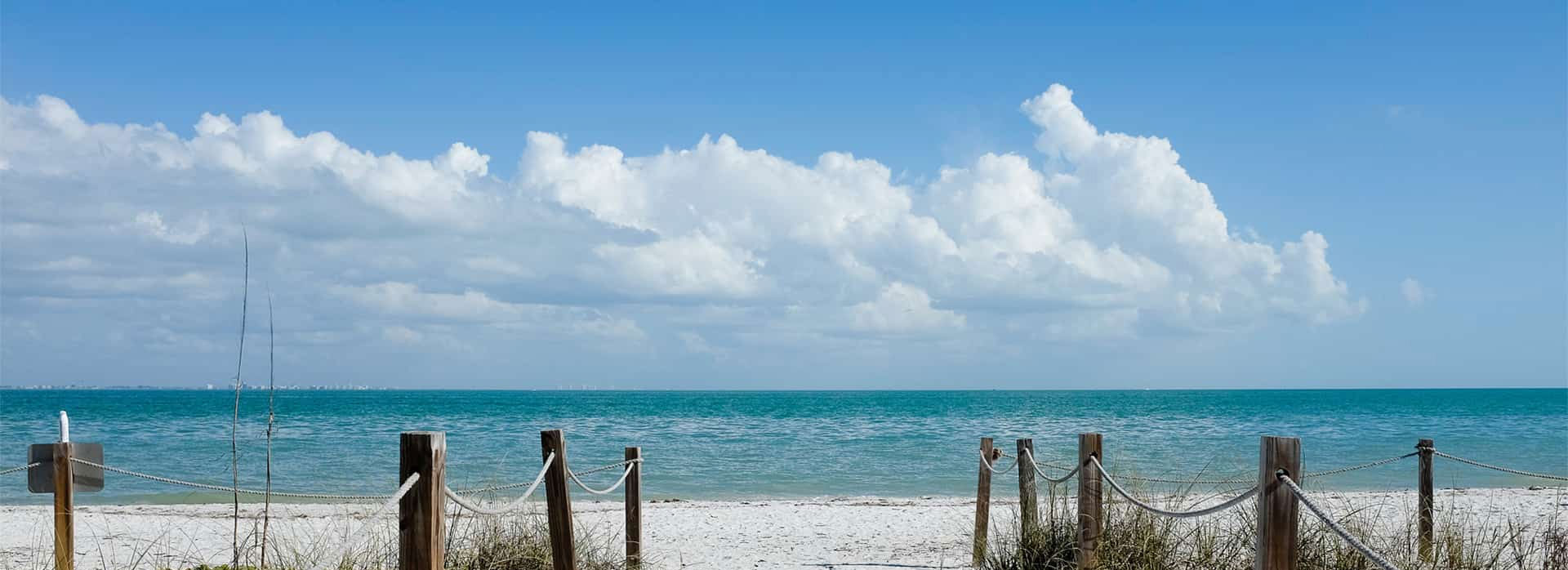
How Venice Came To Be

The area of Venice was originally the home of the Calusas, Native Americans who lived more than 12,000 years ago. Although Florida was occupied by the Spanish in the sixteenth century, much of its southwestern coast remained a wilderness. The 1800’s saw the first true wave of settlers sweep the area when the government offered free land to anyone who would homestead it. Bolstered by northern newspapers’ glowing accounts of the beauty and richness of the state, newcomers began to move in.
Originally called Horse and Chaise because of a carriage like tree formation that marked the spot for fisherman, the city acquired its present name in 1888 from settler Frank Higel, considered the “Father of Venice,” because of its likeness to the canal city in Italy where he spent his childhood. In the early 1900’s, Bertha Honore Palmer, a wealthy widow from Chicago, spent part of her fortune to acquire 140,000 acres of Florida wilderness, half of which was in the Venice area. Her cattle ranch was one of the biggest in the state and her home on the bay was complete with marble pillars lining walkways through formal gardens.
Around 1916, the climate and the natural beauty of the area captivated Dr. Fred Albee, a New York physician who purchased the entire village of Nokomis on Dona and Roberts Bay after just an eight-day visit. He came to Venice with a dream to build a model city and commissioned John Nolen, a well-known Boston city planner, to create a Gulf Coast paradise. By 1923, Venice was connected to Tampa and Miami by a two-lane road that became the Tamiami Trail. During the real estate boom of the 1920s, the designs and land that were to become the City of Venice were sold to the Brotherhood of Locomotive Engineers of Cleveland, Ohio as a retirement haven for members of the engineers’ union.
The City of Venice was incorporated in 1927 and the dream of a model community became a reality when homes & businesses featuring Italian architecture were constructed. Economic boosts occurred in 1932 when the Kentucky Military Institute moved into the San Marco Hotel and Orange Blossom Garage buildings and again in 1941 when the Army opened a training base at the municipal airport.
Population grew from 863 in 1950 to nearly 10,000 in 1957. Following the arrival of the Ringling Brothers Barnum & Bailey Circus, which made Venice its winter headquarters in 1960, the Venice area’s population took another leap to 27,000 in 1962. The Intracoastal Waterway was constructed in the 1960’s, making Venice an “island” and increased pleasure boating in the area. One of the few carefully planned cities in the United States, Venice is artistically landscaped with palms, flowers, silver trumpet trees, live oaks and pines. It is now a Florida MainStreet City, a designation awarded by the State of Florida for Historic Preservation. From a small fishing village to a destination for vacationers, a haven for retirees and young families alike, Venice has evolved into a thriving town.
Search Rentals
Book your perfect gulf coast rental in minutes!

